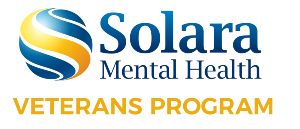Depression and anxiety have a new treatment option, and it is becoming more widely used all across the United States. What is transcranial magnetic stimulation, otherwise known as TMS?
How well does TMS work? Does it sound too “science fiction-ey”?
More than 16 million adults in the United States experienced a major depressive episode between 2017 and 2018, and with medical science advancing as rapidly as it is, it’s no wonder that new technologies and therapies are beginning to take the stage as options to conventional mental health treatment plans.
What is Transcranial Magnetic Stimulation?
TMS is a magnetic stimulation technique intended to target nerves in your brain that affect your mental health. More specifically, the magnetic field, delivered through a special device you wear on or over your head, stimulates the brain cells known to affect mood. The levels of magnetic energy used are in low amounts, at an individual’s unique brain frequency.
Most TMS sessions take 20 to 60 minutes and don’t require any time to recover afterward. About four to six weeks into treatment (daily, five days a week) is when most patients start noticing significant results, and after that initial treatment, patients only need to go on an “as needed” basis. Regardless of the fact that it’s not meant to be a permanent cure, patients who undergo TMS therapy feel much better overall for several months up to a full year afterward.
Many lifelong depression and anxiety patients who have undergone TMS treatments for at least a month to six weeks will tell you that they begin seeing positive results immediately after each treatment.
TMS was approved in 2008 to treat depression and in 2013, the U.S. Food and Drug Administration (FDA) also approved TMS therapy to treat some migraine conditions. In the fall of 2018, the FDA went on to approve TMS to treat obsessive-compulsive disorder (OCD), and studies are currently underway to see if it can be a viable treatment for other mental health conditions such as bipolar disorder and post-traumatic stress disorder (PTSD).
Some aspects of TMS appear to simulate what some medications do, e.g., the release of dopamine that happens after a TMS session is similar (but not exactly the same) to what a medication can do.
But TMS can restore functionality, and that’s the important thing. Patients who undergo TMS treatment report “feeling normal” again, compared to patients on psychotropic medications who feel “different” than they do normally, because of some of the medication’s side effects.
What’s so Great About TMS?
TMS is part of a newer generation of developing technologies informed by neuroscience and is easier to use than current technologies. It could very well be a look at the future of mental health care: it’s non-invasive, immediately effective after the first month to six weeks of treatment for long periods of time, and it’s especially effective for those with more severe depression and anxiety.
After the brief treatment, patients can get back to being engaged with their lives immediately, with a more positive outlook, and all the energy they need to do all the things they normally do. Further research shows that even just a few minutes of TMS daily can make a significant improvement in reducing symptoms of depression and anxiety.
TMS side effects are few and they are mild. Common side effects include minor headaches, lightheadedness, and some scalp discomfort during treatment sessions. Some facial muscle spasms and tingling or twitching of these muscles have also been reported during treatment sessions
What’s the Difference Between TMS and electroconvulsive therapy (ECT)?
TMS has shown itself to be a viable alternative to electroconvulsive therapy (ECT) for patients who are resistant to conventional mental illness treatments.
There are some key differences between TMS and ECT treatments:
- ECT requires anesthesia and typically a hospital stay while TMS does not.
- ECT brings with it the risk of memory loss and cognitive confusion. Patients undergoing TMS have not manifested these side effects.
- ECT is designed to create a brief seizure in the patient as a part of the treatment session. TMS does not utilize seizures as a way to treat patients.
TMS Accessibility?
If you’ve tried several types of antidepressants or other standard depression treatment, and have not received relief from your symptoms, you may want to discuss TMS with your mental health care professional. Ask him or her about the benefits and risks, and if TMS could be a good addition to your treatment.
TMS currently has one downside: the cost. It costs up to $10,000 to 15,000 for the initial four-to-six-week treatment. Though TMS has been approved by the FDA to treat depression and anxiety after trying one antidepressant medication that proved unsuccessful at controlling depressive/anxiety symptoms, many insurance companies won’t cover the treatment until after a patient has tried at least four different antidepressants. Double-check with your insurance company to see if your coverage will cover the TMS treatments you are considering. It is still less expensive than ECT.
As always, maintain your sleep, exercise, nutrition, and stress management techniques as you normally would, even if you do undergo TMS treatment, as it will not be effective if you are not taking care of yourself.
Have you heard about TMS? Post a comment below. . .We’d love to hear your thoughts!
Are you struggling with mental health issues? Mental health is very manageable. If you or someone close to you need to talk to someone about mental health issues that seem overwhelming, we can help. Consider reaching out to our expert team at Solara Mental Health at 844-600-9747.


